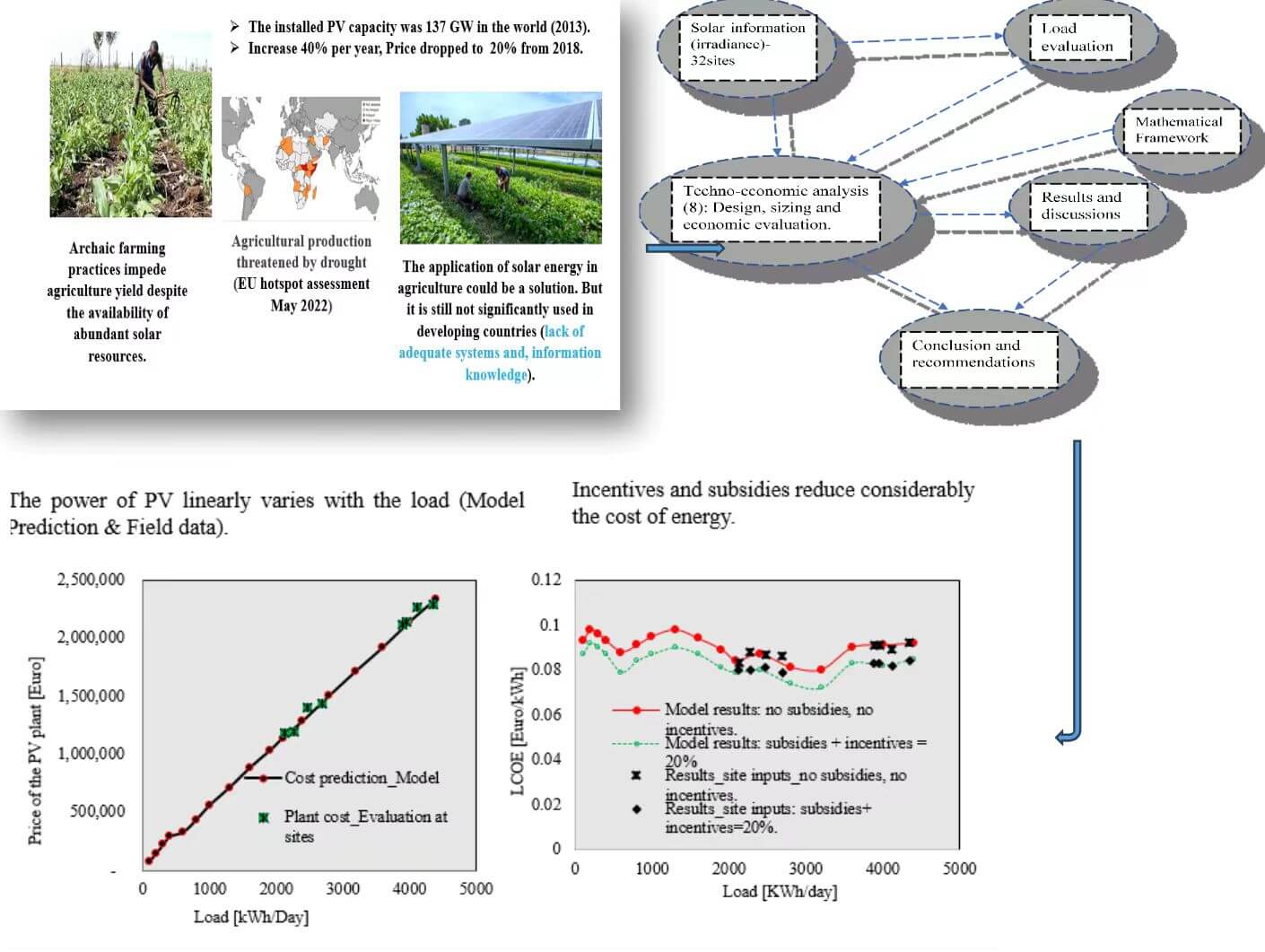 Open Access
Open Access
ARTICLE
A Techno-Economical Characterization of Solar PV Power Generation in Rwanda: The Role of Subsidies and Incentives
1 African Center of Excellence in Energy for Sustainable Development, University of Rwanda, Kigali, Rwanda
2 African Center of Excellence for Sustainable Cooling and Cold Chain, University of Rwanda, Kigali, Rwanda
3 Department of Agricultural Mechanization, School of Agriculture Engineering, University of Rwanda, Nyagatare, Rwanda
4 Department of Electrical and Electronics Engineering, Kyambogo University, Kampala, Uganda
* Corresponding Author: Morris Kayitare. Email:
(This article belongs to the Special Issue: Key Technologies of Renewable Energy Consumption and Optimal Operation under )
Energy Engineering 2023, 120(9), 2155-2175. https://doi.org/10.32604/ee.2023.028559
Received 24 December 2022; Accepted 23 March 2023; Issue published 03 August 2023
Abstract
Standalone Solar PV systems have been vital in the improvement of access to energy in many countries. However, given the large cost of solar PV plants’ components, in developing countries, there is a dear need for such components to be subsidised and incentivised for the consumers to afford the produced energy. Moreover, there is a need for optimal sizing of the solar PV plants taking into account the solar information, energy requirement for various activities, and economic conditions in the off-grid regions in Rwanda. This study aims to develop optimally sized solar PV plants suited to rural communities in Rwanda. Likewise, it aims at characterizing the impacts of subsidies and incentives on the profitability and affordability of solar PV plants’ energy in Rwanda. In the study, we have developed a model on basis of which the plant power (peak power) and costs of energy can be predicted given the load requirements using PVSyst. The model was validated using data corrected at eight different sites. Our generalized predictive model’s results matched the results obtained using field measurement data as inputs. The models have been able to replicate with a by degree of accuracy the peak powers and the plants’ costs for different loads and were used to evaluate the economic viability of solar PV plants in Rwanda. It was found that with incentives and subsidies of 20%, the solar PV systems’ costs, the Levelised Cost of Energy would drop from a maximum of 0.098 Euro to a minimum of 0.072 Euro, the payback period was reduced from a maximum of 7.5 years to a minimum of 6.0 years while the return on investments was seen to vary between 425.72 and 615.32 per cent over the plants’ lifetime of 25 years. Overall our findings underscore the importance of government subsidies and incentives for solar PV energy generation projects to be significantly profitable.Graphic Abstract

Keywords
Cite This Article
 Copyright © 2023 The Author(s). Published by Tech Science Press.
Copyright © 2023 The Author(s). Published by Tech Science Press.This work is licensed under a Creative Commons Attribution 4.0 International License , which permits unrestricted use, distribution, and reproduction in any medium, provided the original work is properly cited.


 Submit a Paper
Submit a Paper Propose a Special lssue
Propose a Special lssue View Full Text
View Full Text Download PDF
Download PDF Downloads
Downloads
 Citation Tools
Citation Tools